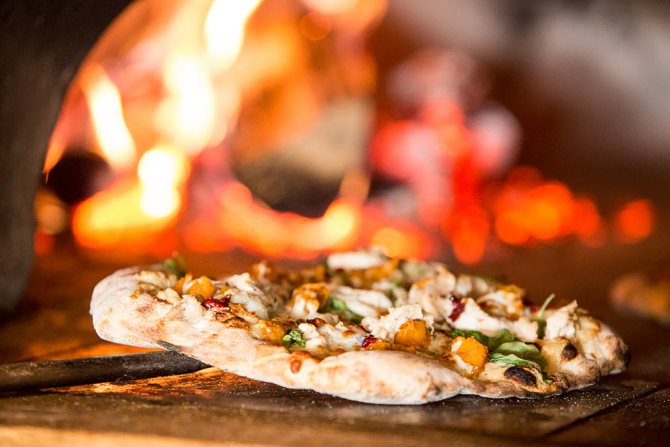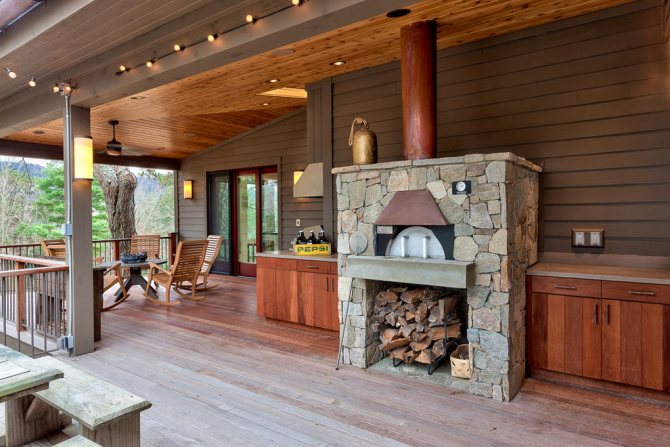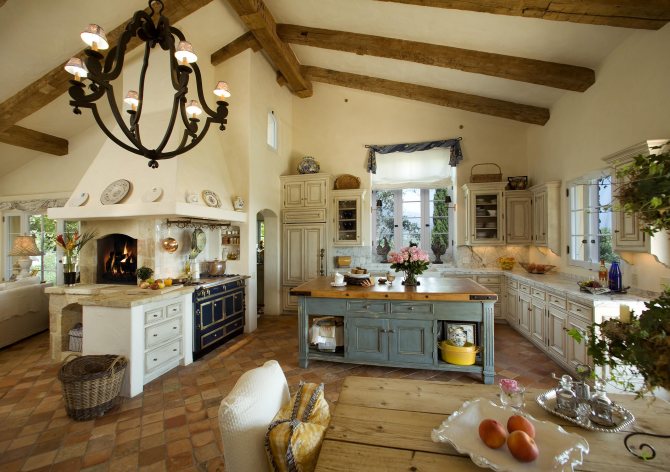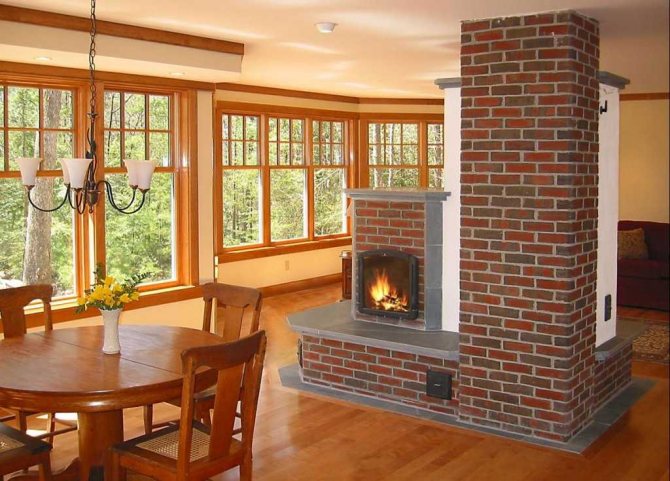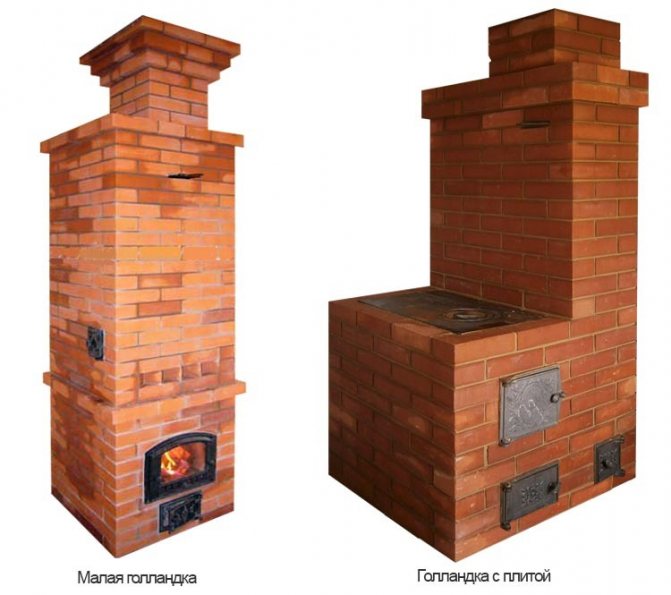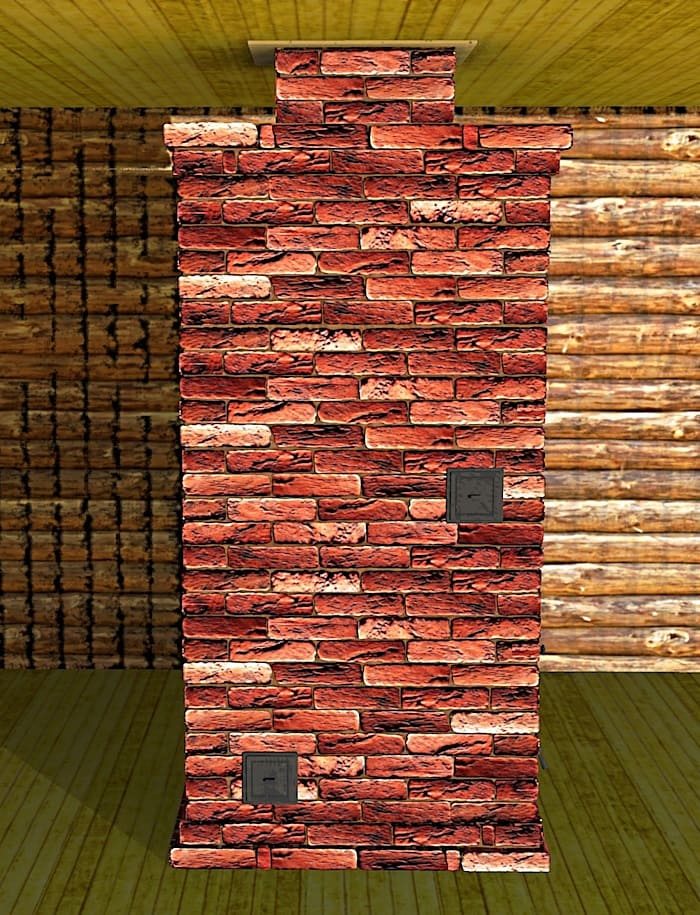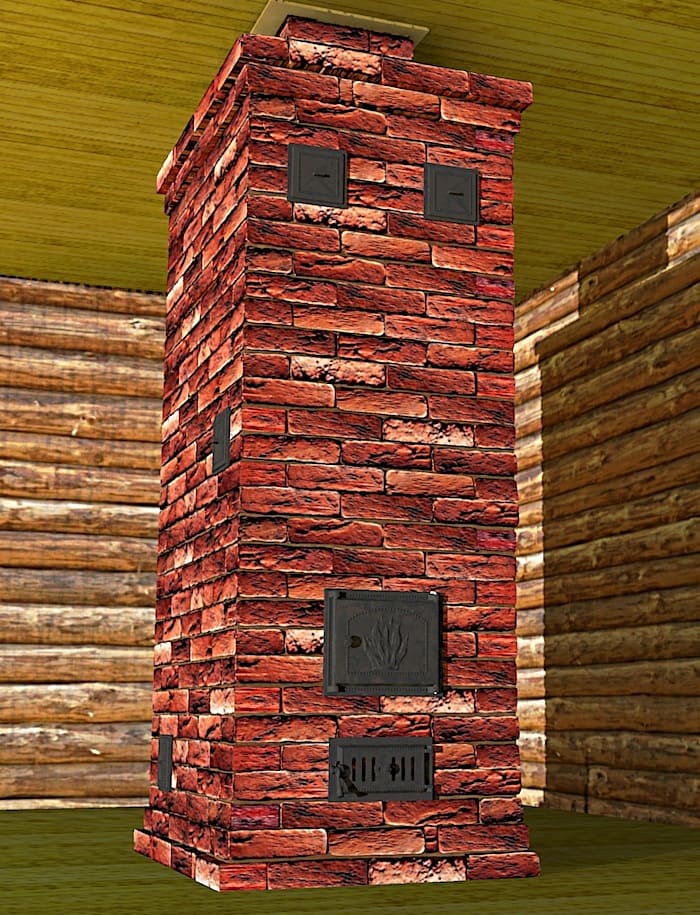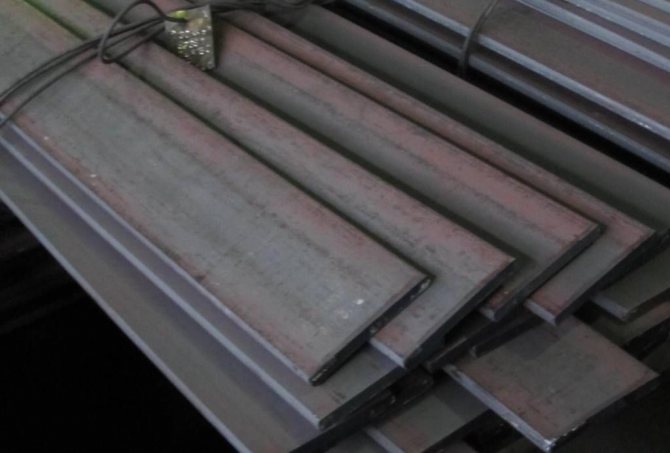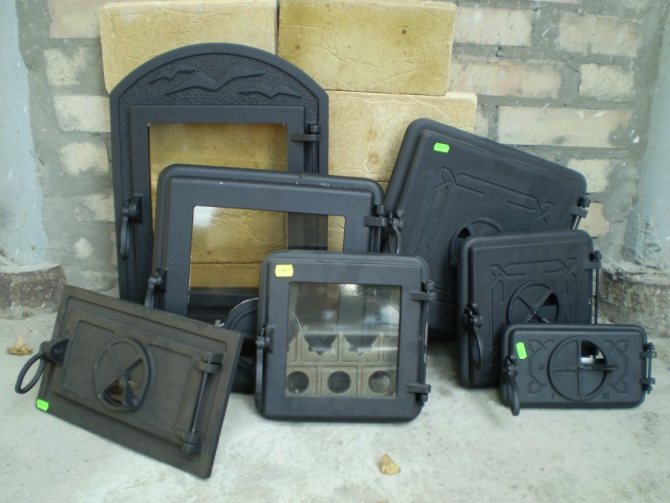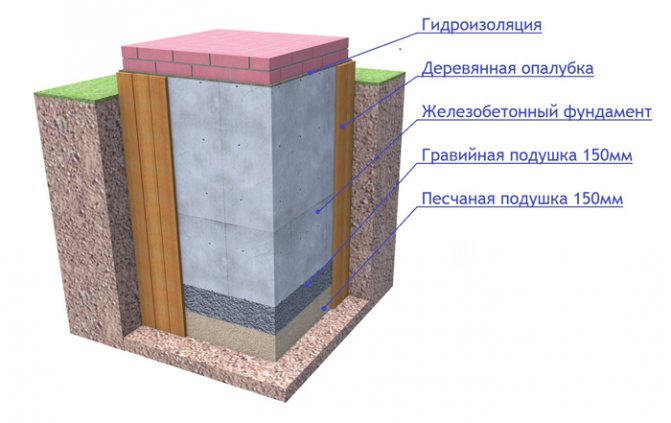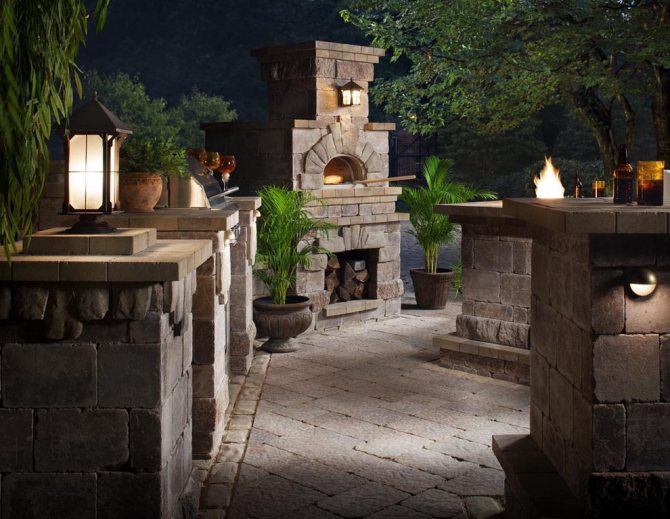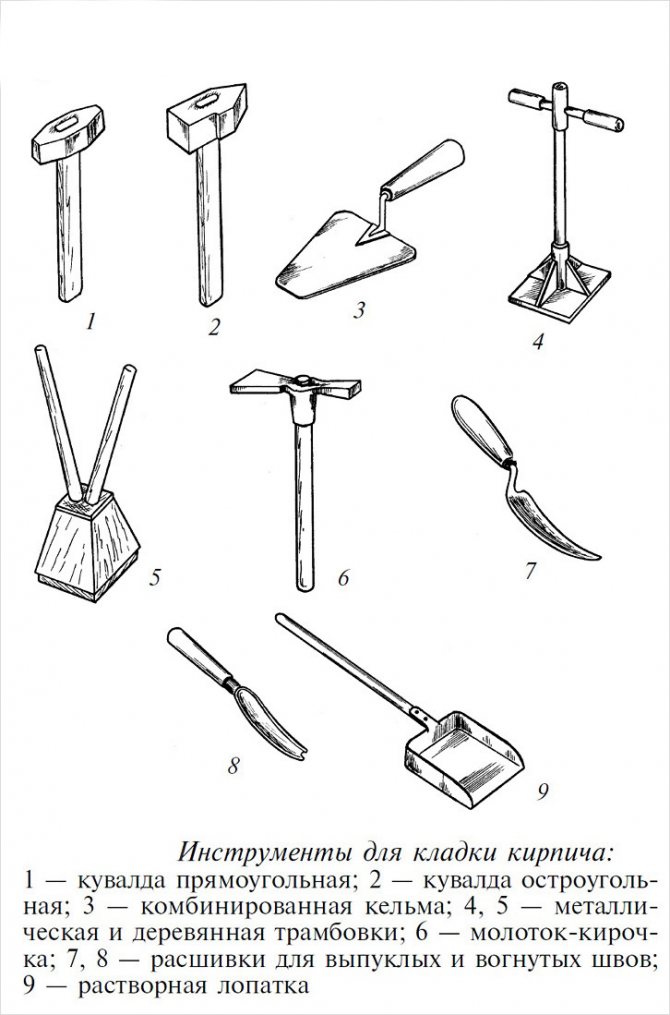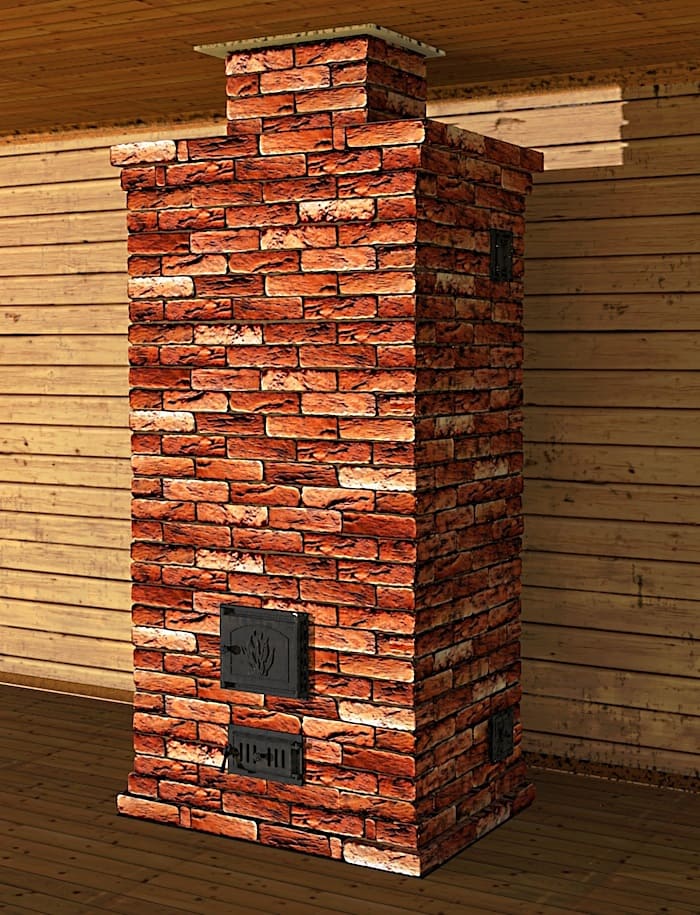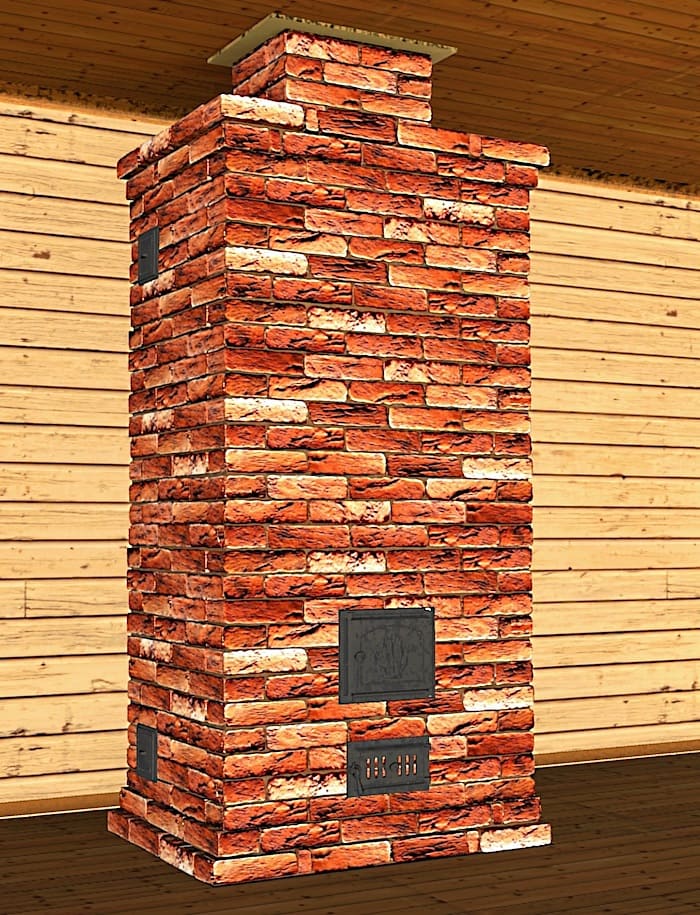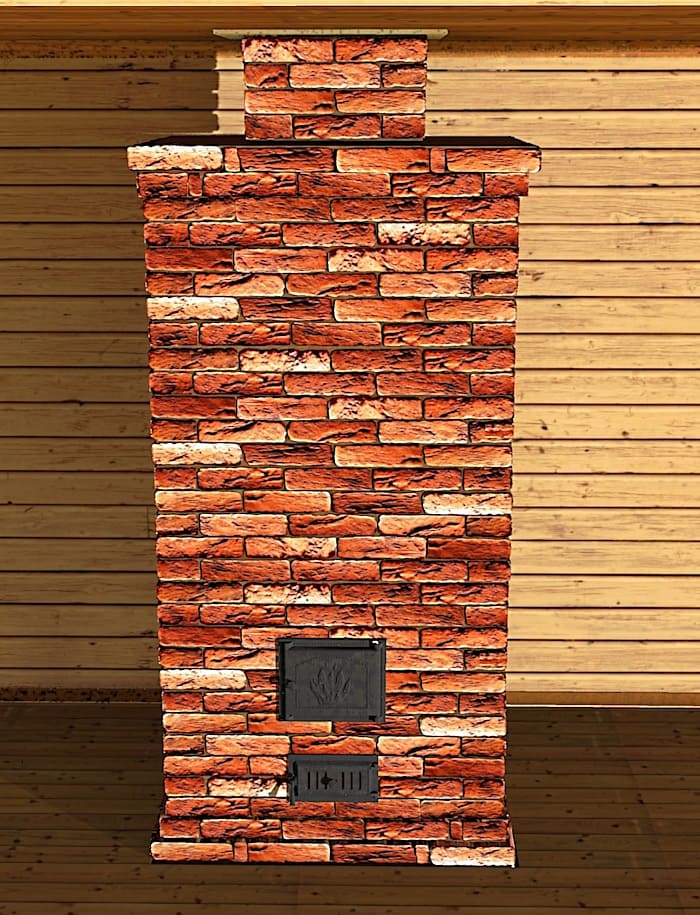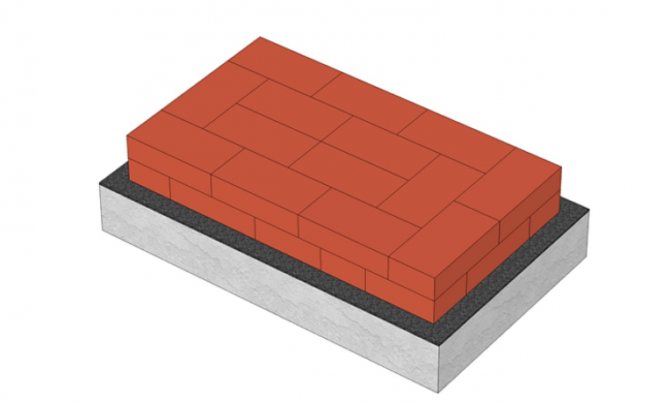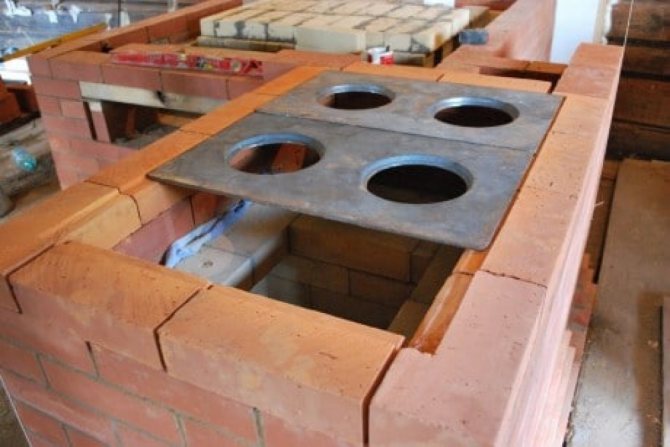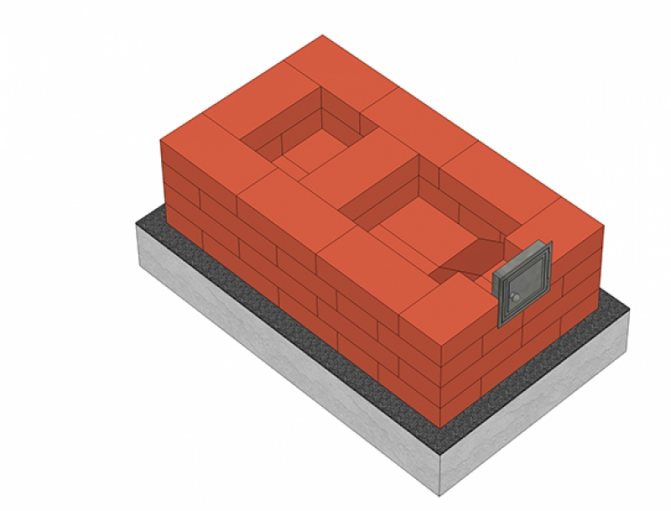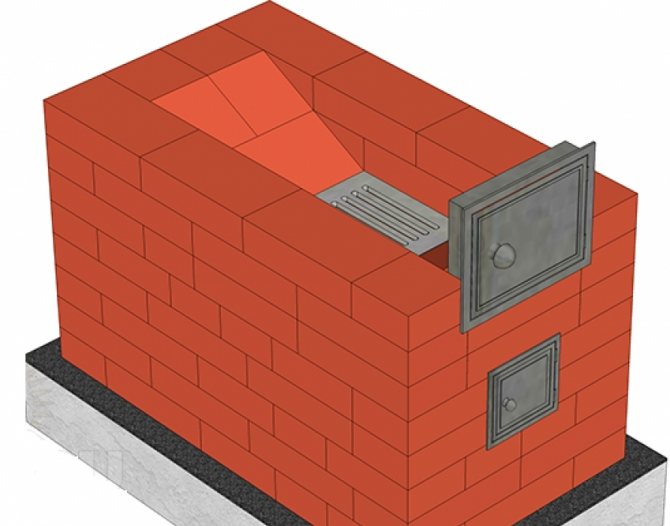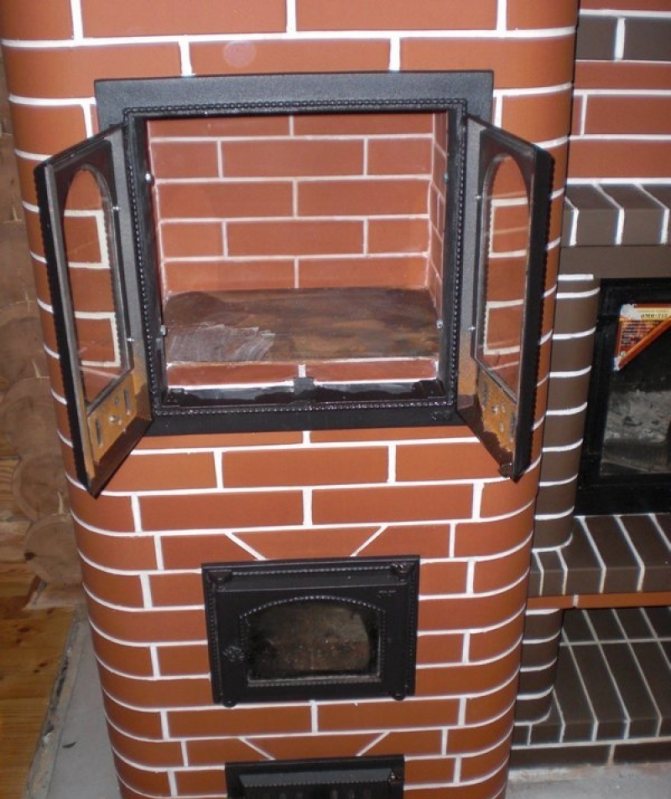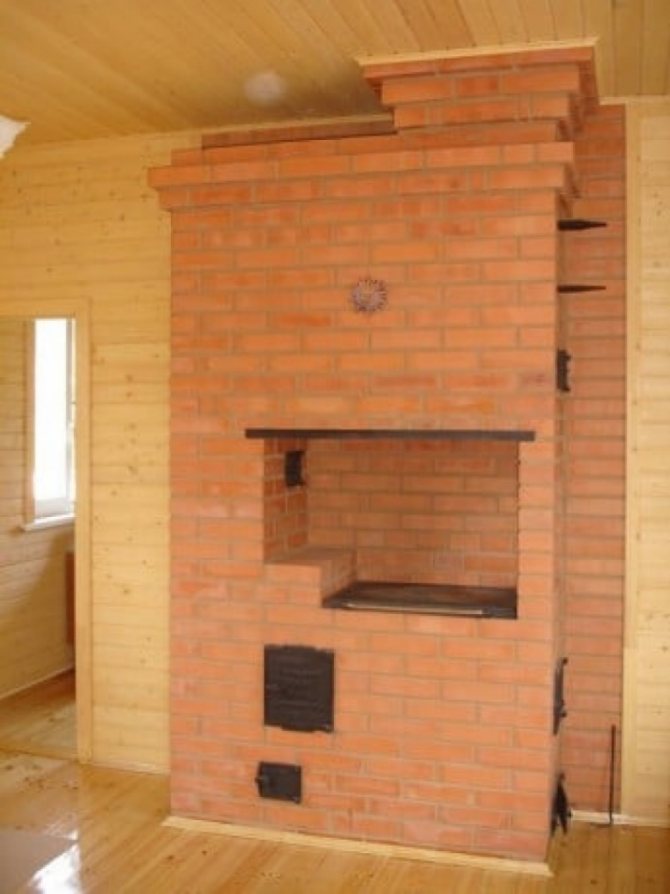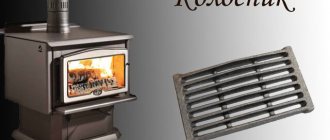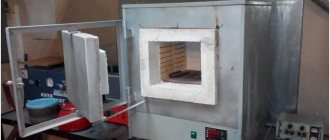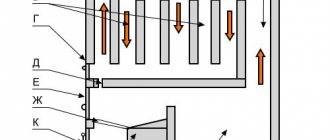Dutch heating method
The brick oven is Dutch. Often, the stove is used to heat a private house in the suburbs or in rural areas where other heating methods cannot be applied. Heating a house in this way in most cases is considered the most suitable option for heating a country house, both when people are constantly in the room, and during the period of rare visits. Hot air is considered to be a heat carrier for this heating method. Almost all of these stoves heat the house with their own walls, there are projects where air flows along the walls from the inside, in the process of its movement it becomes hot and comes out. And if the air heats up only from the surface of the hearth, then the area of the heat generator should be enough to warm up the room.
"Dutch" large size
This design is capable of heating a room with an area of about 50 sq. meters. It is a large, complex structure. The stove looks very massive, so it is installed only in large, spacious rooms. To give a beautiful and decorative look, its surface is decorated with tiles. Below is a diagram of how to fold a large Dutch oven with your own hands.
2 options for ordering:
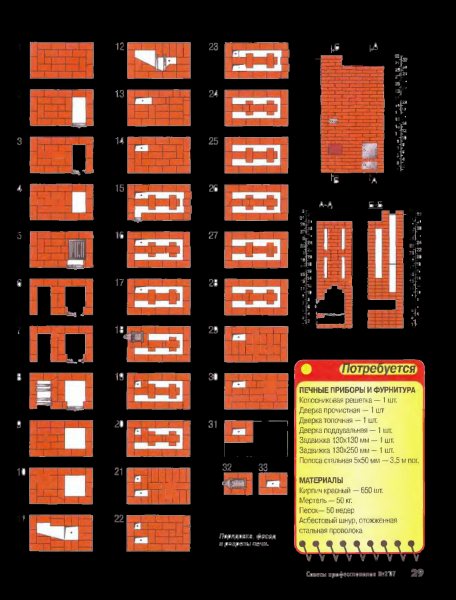
Dutch oven projects
Dutch oven 002
This design of the stove is characterized by high efficiency. The main function of the Dutch oven is heating. This heating stove is made of solid ceramic bricks. Its design consists of: Firebox, chimney system, regulation of the speed of the emitted smoke. With its small size, this stove simply fits into the design of any room.
OP-Dutch 003
The classic version of the Dutch stove is a rectangular structure lined with one brick, which has extended smoke channels above the firebox. The main purpose of the Dutch oven is exclusively the heating function. This design of the stove is characterized by high efficiency. The main function of the Dutch oven is heating
Dutch oven 004
The main purpose of the Dutch oven is exclusively the heating function. This design of the stove is characterized by high efficiency. The main function of the Dutch oven is heating. This heating stove is made of solid ceramic bricks. Its design consists of: a firebox, a chimney system, regulation of the speed of the emitted smoke. With its small size, this stove simply fits into the design of any room.
Dutch oven 005
Designed for premises ranging from 20 to 40 square meters. The classic version of the Dutch stove is a rectangular structure lined with one brick, which has extended smoke channels above the firebox. The main purpose of the Dutch oven is exclusively the heating function.
Home Dutch 006
Designed for premises ranging from 30 to 60 square meters. The classic version of the Dutch stove is a rectangular structure lined with one brick, which has long smoke channels above the firebox. The main purpose of the Dutch oven is exclusively the heating function. This design of the stove is characterized by high efficiency. The main function of the Dutch oven is heating. This heating stove is made of solid ceramic bricks. With its small size, this stove simply fits into the design of any room.
Heating Holland 007
The main purpose of the stove is exclusively the heating function. This design of the stove is characterized by high efficiency.The main function of the oven is heating. This heating stove is made of solid ceramic bricks. Its design consists of a firebox, a chimney system, and a speed control of the emitted smoke. With its small size, this stove simply fits into the design of any room.
Dutch oven 008
Designed for premises ranging from 20 to 40 square meters. The classic design of such a furnace is a rectangular structure, lined with one brick, which has extended smoke channels above the firebox. The main purpose of the device is exclusively the heating function. This design is characterized by high efficiency.
Oven Dutch 009
The main purpose of this design is exclusively the heating function. Stove tests are characterized by high efficiency. This heating stove is made of solid ceramic bricks. Its design consists of: a firebox, a blower, a damper. With its small size, this stove simply fits into the design of any room.
Heating furnace dutch 010
Small construction for premises ranging from 18 to 24 sq.m.
The exterior is a rectangular structure, laid out in one brick, which has extended smoke channels above the firebox. It has a narrowing above the firebox. Dimensions 750x750 cm. Small in size, this stove simply fits into the design of any room.
An indisputable positive aspect of the operation of the furnaces themselves is that in this situation, the conductor of heat is air, which has a huge penetrating ability and a very short heating period.
Of course, heaters have been used by mankind since time immemorial and over time certain changes have been gradually introduced into them. Absolutely all stove heating systems are subdivided into heat-intensive and non-heat-intensive. Heat-consuming storage devices are able to maintain a certain temperature for 3-12 hours. It still depends on what type of construction the heat accumulator has. As a rule, in order to increase the efficiency, water heating is connected to the stoves. This technique is becoming more common over time. In addition, it perfectly suits the design, perfectly decorating the room.
| Dutch woman (01) 4x3 bricks For heating living quarters up to 60 sq.m. Installation both interroom and island. The location of the doors on either side of the structure. It is possible to install a steam heating boiler. Designed for year-round use. |
The advantages of a Dutch brick lined
Those who constantly use the Hollandka brick oven can very easily name a large number of positive qualities that distinguish this design from similar devices:
- Small size, very compact look. For those who wish, the ordering of the heating Dutch woman is specially made, maintaining dimensions of 0.5x0.5 meters;
- Construction does not require a lot of material. To lay out a large oven, 650 bricks are needed. This is much less than it takes to create a small Russian stove. Such efficiency allows you not to invest a lot of money in construction;
- The firebox is laid out with fireclay bricks. Other elements are made from red bricks. Small mass, does not require the construction of a powerful foundation;
- The Hollandka stove can heat two floors freely. There are professionals who create such stoves that heat four floors at once;
- It has excellent heat dissipation, and the heating of the walls does not reach 70 degrees;
- Very simple masonry. Even a novice in the oven business can lay it out;
- Regular heating is not required. It melts easily even after long periods of inactivity.
- Ideal for heating a summer cottage.
Cons and pros
The main disadvantages of heating with a Dutch stove:
- require a lot of space in the room;
- the rate of heat transfer from air is less than that of water, and therefore more is needed;
- there are problems with the distribution of heated air in the rooms;
Is a very expensive pleasure.
It is important to note that heating stoves are much more difficult to maintain than steam heating, for which you just need to perform correct debugging, after which you just need to control the correct functioning of the system. During the use of the stove, it is necessary to constantly take care of the fuel and take care of the structure, as well as the room in which it is located must be periodically cleaned, since it quickly becomes dirty. It is important to note that the stove takes up quite a lot of space, so it is necessary to find a suitable place for it, and also you need to constantly look after it and check its correct functioning, since without these works, a fire may occur or carbon monoxide poisoning may occur. However, despite all the above disadvantages of stoves, they have high efficiency, quickly heat up rooms, are cheap to install and operate, and are also multifunctional, since they can be used to cook food that has a pleasant and unusual taste and rich aroma.
| Dutch (02) 0.75m per 1m Heating. 3 kW |
How the oven works
The Dutch woman is very versatile. It serves as a heating device. It can also be considered as an interior decor - a fireplace. To do this, you just need to open the firebox doors.


Despite the fact that the classic Dutch woman is placed without a stove, if desired, you can add a hob for cooking.
Classic Dutch stoves are deprived of the usual blower and grate bars, which only contributes to an increase in the percentage of heat transfer: you can put a lot of firewood in the firebox and "forget" about them for quite a long time.
They will burn very, very, very slowly, since the oxygen flow supporting the combustion enters the Dutch woman only through the only hole present in such a furnace - the door for the firebox.
Thin walls - just one brick - ensure rapid penetration of heat into the room and heating the room in a short period. Small stoves, meter by meter, are capable of heating a medium-sized dwelling, for example, a room of 35 square meters, heats up from a Dutch woman in an hour.
A distinctive feature of the Dutch oven is the absence of a cast iron panel, which is used for cooking. The stove is always rectangular and because of this standard shape, some stove-makers call it primitive. But this does not detract from its ergonomics and economy, which make the stove in demand among developers.
Dutch ovens have two recognizable shapes: rectangular and round.


Externally, the stove is made very simple - the brickwork serves as a design element at the same time (as an option, you can also use tiles).
Inside, the Dutch stove is equipped with a deaf firebox of impressive dimensions and six smoke circulation channels, arranged in such a sequence that the heated gases, entering those called lifting ones, cool down a little, heating the furnace structure by parts.
That is, schematically it happens like this:
- The entry of gases in the hottest state into the first lifting channel.
- The flow of gases slightly cooled in the first channel into the second channel.
- The flow of gases sufficiently cooled in the first two passes into the third channel.
This sequence allows the stove to warm up gradually and protects its surface from cracking and cracks, which would certainly occur with instant heating.
As they rise and fall, the gases go through all six turns, circulating heat.
When laying such a stove, it is imperative to adhere to parameters that absolutely do not correspond to the parameters of a bulky Russian stove. And it's not so much about the elegance of the Dutch woman as about the height of her firebox.
It is located lower than that of a traditional Russian stove - 25 cm from the floor level. This height ensures uniform heating along the height of the room by shifting the level of the steam balls.
Place for the oven
Before directly installing the structure, it is important to determine the location of the furnace, since this issue is considered extremely important and relevant. Many people think that the best solution is to place the structure in the middle of the room, and in this case the smoke ducts should be laid along the wall, thus reducing the headroom and improving draft. However, this arrangement creates a constant circulation of air, in which it cools near the outer walls and returns to the furnace, forming an oven draft. Cold air above the floor, which moves from the walls to the stove, creates discomfort for people who live or are just in the room, so you cannot achieve good health in this way.
Therefore, the best solution is to locate the Dutch woman near the outer walls, however, in this case, there are certain disadvantages. A problem arises with smoke channels, since condensation appears on the inner walls and draft deteriorates, so the room will get dirty very quickly.
The compromise and the most optimal option is the location of the stove in the middle of the house, and the surfaces that give off heat should go out into the living rooms, and parts that are heavily contaminated, such as the firebox and stove, should be in the kitchen.
This stove is well suited for giving
Video - Oven Dutch
"Dutch" for a small summer residence
Such a compact design can be fired with coal and wood, and heat a room with an area of 16–20 square meters. meters. What the order looks like can be seen in the figure below.


Repeating the belt 17,19, 21 and 18, 20, 22 rows, the size of the stove can be increased in height. A small country stove Hollandka is made with dimensions of 520x520 millimeters.
Note
In accordance with the SNiP of 1991, stoves in log buildings are permissible only when the number of storeys of the building does not exceed two floors. Considering this, the temperature of the walls of the Dutch woman should be no more than 60 degrees.
These units are designed to heat, as a rule, one or two rooms. Their dimensions vary depending on the area to be heated. For example, for a room with an area of 20 m2, a stove with dimensions of 750 x 750 x 2000 mm is sufficient, provided that the house is well insulated. Such a stove, folded in the corner of a room, takes up very little space, and lined with ceramic tiles, and even with a glass furnace door, can become a real decoration of the interior. For two rooms, the heated surface of the oven is doubled. Such a stove is placed on the border of adjacent rooms, and in this case it makes sense to think about whether to make it a heating and cooking stove. These are the so-called "Swedes". Being multifunctional, they are ideal for summer residents who like to make blanks, dry mushrooms and berries, etc. Some ovens have two operating modes: summer and winter. Summer mode allows you to use the hob without heating the entire oven. This often helps with prolonged power outages. And now we get to the fun part. These combined fireplace stoves are universal heating devices that combine the practicality of stoves and the aesthetics of fireplaces. The inclusion of a fireplace in the design of the stove is almost always associated with the need to develop a project.The increased cross-section of the chimney pipe of the fireplace stove allows connecting additional heating devices on the upper floor of the house (metal stoves and prefabricated fireplaces) to it.
Dutch device


Scheme and dimensions of a classic Dutch oven
A diagram of a classic, original Dutch oven is shown in the figure. The principle of its operation is simple: the path of passage of flue gases is artificially lengthened, which is why they give off more heat to the furnace body. No physico-chemical-thermodynamic subtleties are provided, therefore, breaking something in the smoke circulation is no easier than breaking an ax.
Such a structure was formed under the influence of the specific conditions of the medieval Netherlands. The original Dutch woman - heating stove for residential premises; cooked on a stove or fireplace.
Firstly, it has always been cramped in Holland. The Dutch had to recapture their fields - polders - from the sea. The Dutch could not afford to "dance from the stove"; the stove had to be built into the house, which, in turn, was erected in accordance with the available piece of land. A design was required that was simple, compact and plastic - the first Dutch women were laid out in place, and the established designs then survived as a result of natural selection.
therefore the canonical order, as for the Russian oven, for the Dutch woman as such is absent... And now the Dutch women are often developed for specific requirements; for this, computer programs are used. Due to the simplicity of the principles laid down in the Dutch woman, its thermal properties change little from this, if only the basic proportions are maintained.
Secondly, the climate of Holland, like that of the whole of Western Europe, is formed under the influence of the Gulf Stream, and therefore is very uneven in winter: a positive thaw can suddenly be replaced by a severe frost. In general, winters are mild. Therefore, a furnace was required that could quickly warm up from a minimum fuel load. This was achieved by a large ratio of the area of the meandering inner surface to the volume of the material used. But it is also not small, so the Dutch woman combines fast heating with good heat capacity.
Third, homeowners paid real estate tax "from the smoke", from the chimney. The more chimneys, the more the burden on the economy. That is why a side outlet of flue gases was needed in order to bring several or many furnaces at once to one chimney. Here the problem of compatibility of stoves arises, so that the one that is heated more strongly does not force others to smoke, displacing their exits from the chimney. But a rather complicated-looking maze of canals is actually not so difficult to lay out, but it's difficult to blow it back. This also ensured the absence of smoke when blowing into the pipe, which is not uncommon in the seaside Holland.
Finally, due to the same tightness, the city's Dutch houses stretched in height. 5-6-storey building in the XIV-XV centuries. Holland was not surprising. But then there were no concrete floors, so the furnace had to be light and, therefore, not very material-intensive. In general, the Dutch oven acquired some of the properties of box-shaped honeycomb structures, including strength, at a time when there was no such concept.
Note: originally Dutch women were made with a deaf firebox. But soon the Dutch themselves added a blower with a door and a grate to their oven. At the same time, the arch of the firebox was no longer arched; now stoves could put craftsmen below average qualifications.
But there was no need to adapt the stove to waste fuel. The Dutch have never been a poor nation. Herring, cod, flounder, high-quality livestock products, sea trade - and in the seedy-looking fishing houses in the closet there was always a weighty bag of golden guilders. And nearby were the rich coal deposits of the north of France and Germany.
From history along the way. Piracy was a significant source of income for the Dutch.More precisely, privatization - seemingly peaceful phlegmatic fishermen, going out to fish, stocked up on any occasion and state privilege for sea robbery; you never know what is caught in the sea. The reputation of the Dutch sailors was such that a foreign "merchant", seeing on the horizon the characteristic silhouette of a Dutch lugger with beveled stems, a long bowsprit, masts tilted back and huge rake sails, immediately, without looking at his flag, he flew into the wind, added sails, how many could withstand the masts, and loaded the guns. Damn those Dutchmen, don't expect any good from them ...
And what happened to the Dutch as a result of their, then intuitive, delights? Let's get a look.
Detailed assembly instructions
It is not so difficult to fold a Dutch stove with your own hands - our step-by-step instructions will help you with this. We will use a simple small oven design for small buildings. For example, you can use it to heat your country house. It is necessary to start assembly with the simplest - with the purchase of tools and the necessary materials. To assemble the oven you will need:
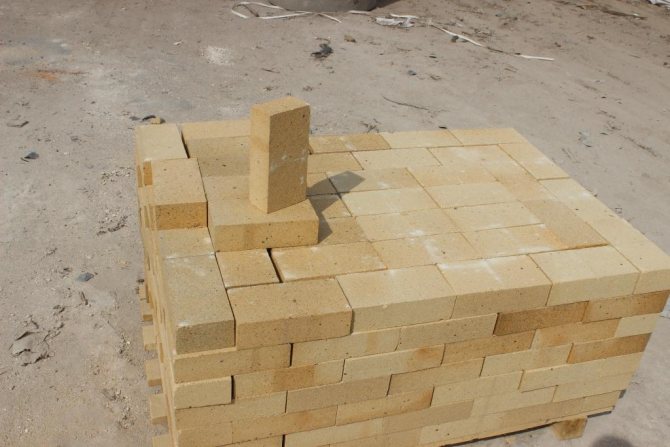

The use of high-quality fireclay bricks is not a whim, but a guarantee of reliable fire safety. Therefore, in no case should you save on buying it!
- An ordinary brick - several hundred pieces.
- Refractory (fireclay) bricks - several dozen pieces.
- Clay Mortar - Used to hold bricks together.
- Doors for the firebox, blower and cleaning, as well as the grate are sold in hardware and specialized stores (refer to the place where stoves and accessories for building your own baths and saunas are sold).
You will also need tools - a hammer for tamping bricks, a trowel for working with mortar, a building level for leveling masonry, twine to control the vertical position of masonry, tools for cutting bricks, steel wire for tying doors and an asbestos cord for laying between bricks and doors. The rest will be remembered and mentioned as we go.
Foundation preparation
In this review, we will focus on a traditional appliance without a hob. A Dutch stove with a do-it-yourself stove is assembled in the same way, but in a different order. You just have to find a suitable assembly scheme. You will also need to buy a cast-iron hob - such things are sold in the same place as the doors with grate grates (we wrote about this a little higher).
We are preparing a platform for the foundation - the Dutch woman should stand on a solid concrete base, and not on a wooden floor. This is the main difficulty in carrying out work. It is necessary to disassemble the floors and reach the base of the house, build a wooden formwork and fill in the future foundation. If there are no floors yet, feel free to dig a hole 50-60 cm deep.Next, lay the layers:
- 10-15 cm of sand - tamp thoroughly and for a long time.
- Up to 20 cm large stones - tamp again.
- 10 cm of crushed stone - press again.
The future screed must be reinforced. We buy rebar with a diameter of 8-10 mm, cut it with a grinder into rods of a suitable size, make a lattice with a mesh size of 10x10 cm. The lattice should be located in the thickness of the concrete screed. We pour concrete - the height of the base above the ground is 15 cm. Our foundation for the Dutch oven is ready, but do not rush to collect it - let the concrete harden.
The recipe for concrete under the foundation - one part of cement, 2.5 parts of sand, 4.5 parts of crushed stone, pour water to a suitable consistency.
As for the clay mortar, leave it to the professionals - they know how to properly prepare the clay and how to make a strong mortar out of it. For amateurs, there are special refractory mixtures for fireplaces and stoves on sale. The price of one pack is from 600 rubles.
The order of the little Dutch woman
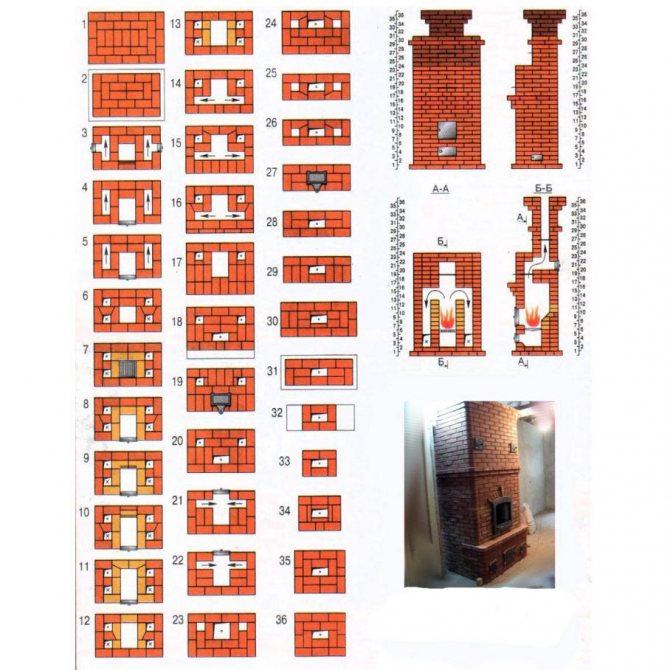

We will carry out the assembly of the furnace in the following order. It consists of 36 simple rows. At the exit, we get an impressive stove, the power of which is quite enough to heat a small house.
The first two rows are solid - they form the base of the Dutch woman. Just lay the bricks according to the indicated pattern and connect them together with mortar. Tap the bricks with the back of a hammer or a wooden mallet, cover the cracks between them with clay or a refractory mixture.
On the third row, side cleaning doors are laid - through them, the internal smoke channels of the Dutch woman are cleaned. Smoke channels also begin from here. On the fourth and fifth rows, a blower door is placed. Pay attention to the fastening of the doors - they are tied with steel wire, the ends of which are laid between the bricks. An asbestos cord is laid between the metal and the bricks.
We made another row of Dutch ovens - check the correct laying with the help of a level and vertical strings.
In the sixth row, the smoke channels continue, and in the seventh row, an innovation awaits us - here the laying of refractory bricks begins, which forms the beginning of the combustion chamber. At this stage, we fix the grate. Starting from the eighth row, the Dutch firebox expands in depth. In the next rows, the laying of smoke channels continues. On the thirteenth row, the construction of the combustion chamber is being completed. It turned out to be narrow, but rather high.
Rows 14, 15 and 16 are similar. Starting from the 17th row, the furnace of the Dutch stove ends, in the 18th it is no longer there. In row 19, another cleaning door is installed. Their abundance will allow you to clean the smoke channels at any time without destroying the stove. The main body of the Dutch woman ends on the 24th row - starting from 25th, the chimney goes up.
There are many versions of the masonry of Dutch ovens. In any case, you should have a compact vertical unit. A Dutch round stove in a metal casing will require skills in working with a welding machine for its assembly. Such models are characterized by increased compactness, hobs are usually absent in them.
Final work
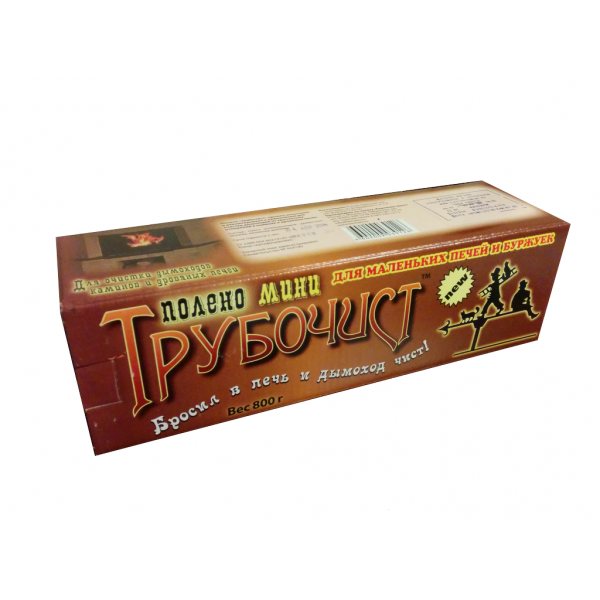

It is not forbidden to use special "Chimney sweep" logs for cleaning the Dutch woman. Read the instructions for the log to help you avoid mistakes.
Our Dutch woman is ready, but it is still far from the start of its operation. First you need to let it dry, usually this stage is 21 days. During this time, the concrete screed will fully mature, the refractory clay mortar will harden. If a beautiful smooth brick was used for cladding, you can start testing. If you plan to finish with ceramics or tiles, feel free to get down to work.
Tests of the Dutch oven begin with checking the draft. To do this, a lump of paper or a newspaper is set on fire in the firebox. If the design matches the pattern, the thrust will be excellent. After that, we sweep out the ashes, lay in large firewood, put scraps of paper and small chips between them. We ignite the stored fuel, close the firebox door, open the blower. Now our Dutch woman should warm up. As soon as the room becomes warm, the cravings can be reduced - we close the blower. Now you need to throw new portions of firewood into the furnace from time to time.
Ash is removed from the blower as it accumulates, it is recommended to do this operation at least once every 1-2 days. The oven should be heated to the maximum two to three times a year to avoid resin drips.
Pros and cons
Each stove has its own advantages and disadvantages, and the Dutch woman is no exception. Thanks to its thin walls, it is more efficient than a Russian stove. Also, due to its rather compact size, it can be installed in any room or structure. Savings are also important. Two times less brick will be used for the construction than for a Russian stove.
In addition, the Dutch woman has the following advantages:
- if necessary, the design can be modified and supplemented with functional elements;
- the design can have various sizes and shapes (round, rectangular);
- the room warms up very quickly;
- the height of the structure does not in any way affect its productivity;
- to build a Dutch woman, you need a little money, since a previously used brick is also quite suitable.


The operating principle of the oven is very simple.
The Dutch woman is best suited for summer cottages and other buildings that have been used for a certain period of time. It will take a little time to warm up, and the room temperature will reach a comfortable level in a few hours. If necessary, the firebox is loaded as much as possible, which will accelerate heating.
Before the construction, it is also worth familiarizing yourself with some of the disadvantages of the device:
- even correct construction and operation does not provide high productivity of the furnace;
- ducts are designed in such a way that there is a risk of drawing in cold air from the environment;
- the stove needs to be heated several times a day;
- despite the savings, a lot of fuel is consumed for heating;
- the view must be constantly monitored, otherwise the structure will quickly cool down;
- it is unacceptable to heat the oven to the maximum temperature.
In a modern Dutch woman, the following elements are equipped:
- fireplace;
- oven;
- hot water tank;
- sunbed;
- heating and hob.
First of all, the Dutch woman is chosen due to the simplicity of design, work efficiency and economy.


There are many nuances to consider during construction.


